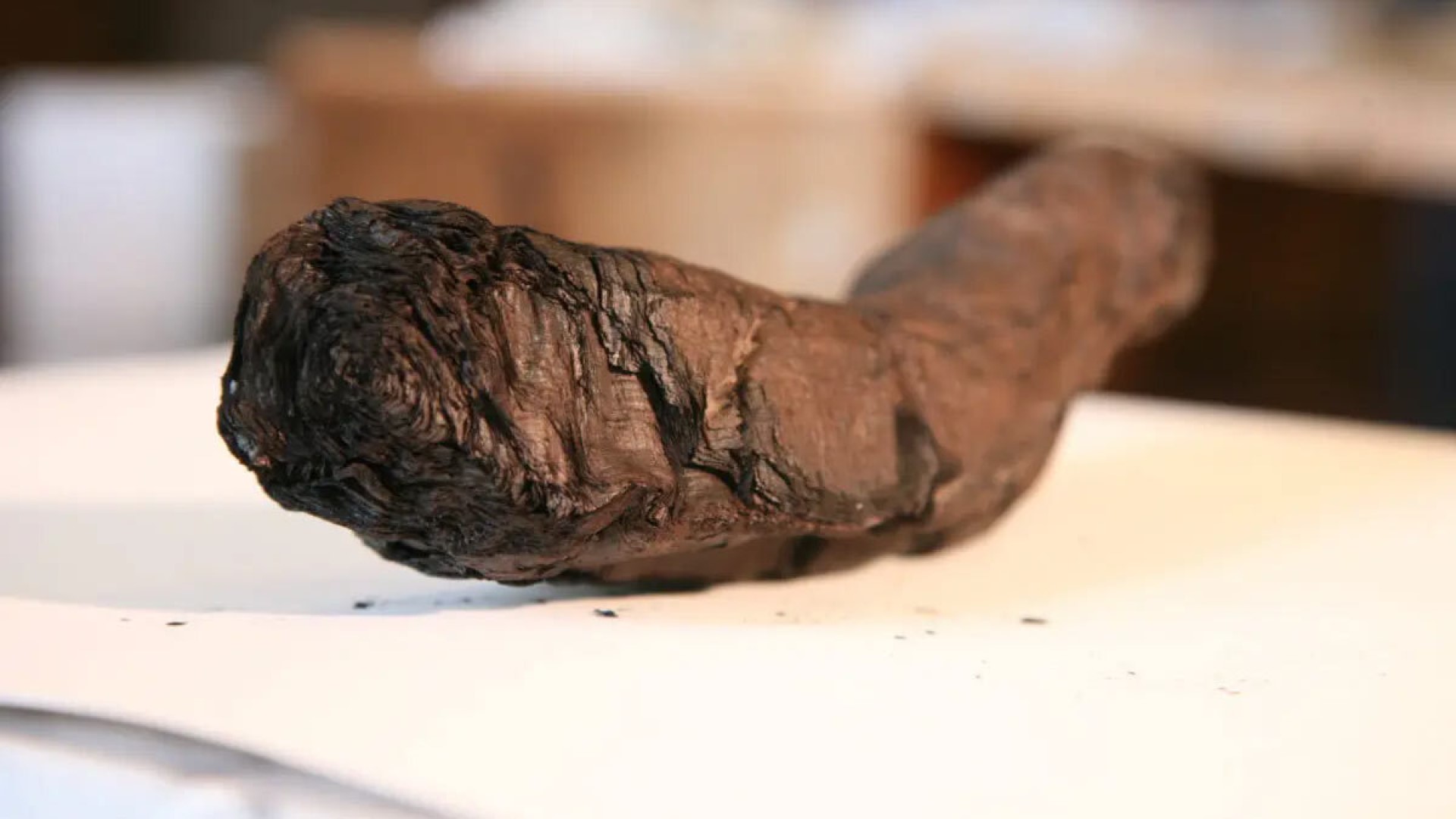Nvidia GPU Used To Decipher Ancient Greco-Roman Scroll

An undergraduate student used an Nvidia GeForce GTX 1070 and AI to decipher a word in one of the Herculaneum scrolls to win a $40,000 prize (via Nvidia). Herculaneum was covered in ash by the eruption of Mount Vesuvius, and the over 1,800 Herculaneum scrolls are one of the site's most famous artifacts. The scrolls have been notoriously hard to decipher, but machine learning might be the key.
Today, x-raying is the method of choice to read ancient scrolls without opening them and potentially causing damage. However, the ink in the Herculaneum scrolls is carbon-based, making it very difficult to distinguish from the charred pages of the scroll itself using normal X-rays.
In 2019, Dr. Brent Seales and other researchers made a breakthrough by augmenting their X-rays with a particle accelerator to scan two scrolls. Earlier this year, those X-rays were run through a machine-learning model to make the ink more legible. The Vesuvius Challenge offers prizes to anyone who can clearly decipher words from the two scrolls.
Luke Farritor, an undergrad at the University of Nebraska-Lincoln and Space-X intern, used his old GTX 1070 to train an AI model to detect "crackle patterns," which indicate where an ink character used to be. Eventually, his GTX 1070-trained AI was able to identify the Greek word πορφυρας (or porphyras), which is either the adjective for purple or the noun for purple dye or purple clothes. Deciphering this single word earned Farritor a $40,000 prize.
Herculaneum was first discovered in 1738, and in 1750 King of Naples Charles VII ordered an excavation of the site, which led to the discovery of the so-called Villa of the Papyri. The site was forgotten shortly afterward, but it was rediscovered in 1986.
The Villa, which may have been owned by Julius Caesar's father-in-law Lucius Calpurnius Piso Caesoninus, contained sculptures, frescoes, and the eponymous scrolls of Herculaneum. A famous bust of the Roman general Scipio Africanus was also found at the Villa of the Papyri.
How To Choose a Graphics Card
Get Tom's Hardware's best news and in-depth reviews, straight to your inbox.

Matthew Connatser is a freelancing writer for Tom's Hardware US. He writes articles about CPUs, GPUs, SSDs, and computers in general.
-
bit_user From what I've read elsewhere, they're using CT-scans. A big challenge is how even to virtually unwrap the scroll, since they have a 3D dataset of it in its wrapped state. You cannot physically unwrap it, because it's basically like a stick of charcoal. So, the task is to find the tiny bits of ink, assemble them into letters, and try to decipher what they say.Reply
I hadn't heard he did this with just a GTX 1070, which doesn't even have any tensor cores. Imagine what he'll be able to do with a RTX 4090! -
P.Amini Reply
What is going on here?!bit_user said:From what I've read elsewhere, they're using CT-scans. A big challenge is how even to virtually unwrap the scroll, since they have a 3D dataset of it in its wrapped state. You cannot physically unwrap it, because it's basically like a stick of charcoal. So, the task is to find the tiny bits of ink, assemble them into letters, and try to decipher what they say.
I hadn't heard he did this with just a GTX 1070, which doesn't even have any tensor cores. Imagine what he'll be able to do with a RTX 4090! -
bit_user Reply
I don't understand your question.P.Amini said:What is going on here?!
Since the Nvidia blog entry doesn't present much more information than the Toms article, here's a better explanation of the challenge:
https://www.scientificamerican.com/article/ai-reads-ancient-scroll-charred-by-mount-vesuvius-in-tech-first/ -
bit_user Reply
Ha ha. Okay, maybe that was @P.Amini 's point, too.Geef said:It was deciphered to read "Oh sh:poop:, is the mountain erupting?"
Obviously, these are rolled-up scrolls in a library - not tweets or instant messages. I'm pretty sure papyrus was too expensive for them even to keep diaries on it. -
Geef Replybit_user said:Ha ha. Okay, maybe that was @P.Amini 's point, too.
Obviously, these are rolled-up scrolls in a library - not tweets or instant messages. I'm pretty sure papyrus was too expensive for them even to keep diaries on it.
Yeah instant messaging in those times was only done by kings. It really pissed off certain kings when all they got was a papyrus :poop: emoji from the next kingdom over. Wars may have begun that way! :eek: -
KyaraM That's really cool. Love that he did it with a GTX 1070, too. I think I will always have a soft spot for that card, it's such an amazing piece of tech. Looking forward to more of this story!Reply -
bit_user Reply
Yeah, we got a GTX 1080 at work, back when we first started dabbling with machine learning. It's no longer used for that purpose, but still running in a machine and I still think of it as "fast" and "good card", purely on the basis of how well it performed at launch. This, even though it's long been surpassed by much cheaper cards and isn't even very efficient by today's standards.KyaraM said:Love that he did it with a GTX 1070, too. I think I will always have a soft spot for that card, it's such an amazing piece of tech.
